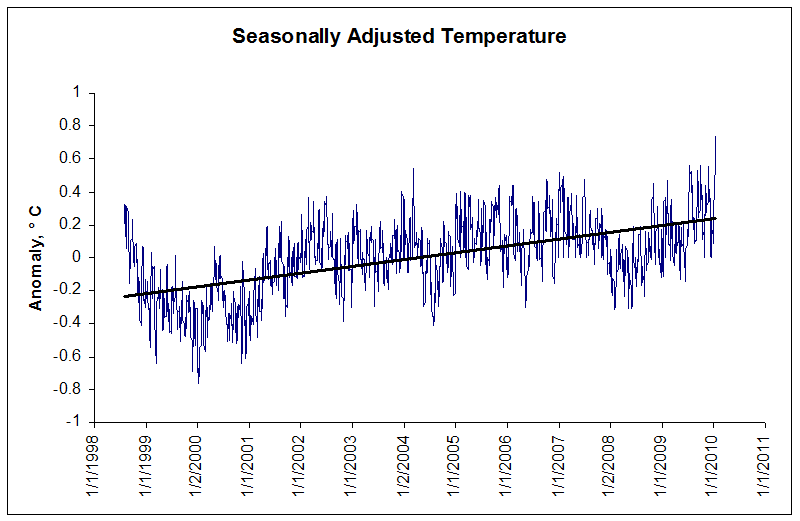Lisle Rose's recent biography of famed aviator and polar pioneer Richard E. Byrd (Explorer. Columbia: University of Missouri Press, 2008) spends a lot of time in Chapter 4 defending a lost cause.
Byrd was a little-known Navy flier until 1926, when he made his reputation by flying an airplane over the North Pole – or so he claimed. There were a lot of suspicions about the flight, however, mostly based on the fact that Byrd arrived back at his base (Kings Bay, Spitzbergen: today called Ny Alesund) after less than 16 hours in the air. Critics doubted that his plane, a Fokker F7a-3m, could have flown fast enough to reach the Pole and back in such a short time.
The controversy has waxed and waned over the years, but it was decisively settled in 1998, when archivist Raimund Goerler discovered Byrd's flight diary, which contains notes Byrd made during the trip. The diary contains sextant observations and subsequent computations that had been erased. However, the erased figures are just legible, and show much different navigational observations than Byrd wrote in his official report. So it is clear Byrd falsified the navigational data in his official report.
That should end the discussion, since clearly there would be no need for data falsification if Byrd had actually done what he claimed to have done. But somehow, Rose didn't get that memo.
We will be discussing the Byrd case in detail over the next few postings, but let's start out with one little nit to pick. One of the issues Byrd skeptics raise is the fact that his plane, the Josephine Ford, was equipped with skis rather than wheels, and that this would have slowed him down. Rose is unconvinced:
Can it be possible that the lift from skis actually increase an airplane's speed? That seems odd, especially since Rose himself, in the very same paragraph, quotes Wendell Summers as saying that skis on his DC-3 slowed the plane's cruise from 160 mph to 145. I was able to find three other planes with published performance data with and without skis: the cruise speed of the Cessna 180J drops from 141 to 123 knots; the Cessna 185E drops from 147 to 131 knots; and the Cessna TU206 E/F drops from 148 to 132 knots. So that's 4-for-4 aircraft slowing down, and by large margins in all cases.
Most important, however, the ski configuration on the Josephine Ford in 1926 was slightly "up," thus providing added lift to the aircraft by facilitating airflow over the plane's big fixed-wheel undercarriage. The skis ... enhanced rather than detracted from the plane's speed.
If we wanted to do things simply, we could just find the average percentage drop in speed for these four planes (11%) and be done with it. The Fokker F7a-3m has a published top speed of 118 mph, and an 11% reduction implies top speed with skis of 105. Byrd reported higher speeds during four hours on the flight.
But what about Rose's claim that the lift of the skis enhances the plane's speed? Well, no. The reverse is true, as engineers have known for a century. There are two sources of drag for an airplane in flight: parasitic drag, which is caused by the shape of the aircraft pushing through the air, and induced drag, which is the penalty the wings pay for lifting the plane off the ground. Parasitic drag increases with the square of the airspeed, but induced drag actually declines at higher speeds, because when the plane flies faster, the wings don’t have to work as hard to generate lift.
The equation for induced drag (Di) is:
Di = kL² / (½ ρ0 Ve² S π AR)
Let's work through this equation, using the DC-3 as our example. In this equation, L is the lift generated by the airplane, which for level flight is equal to the airplane’s weight (although expressed in units of force rather than of mass). It can be seen that induced drag declines as weight declines, which happens as the plane burns off fuel. The variable ρ0 is the mass-density of the air at sea level (1.225 kg/m³) and Ve is equivalent airspeed, or the airspeed shown on the airspeed indicator. The wing area S is known for the DC-3 at 91.7 square meters. The wing’s aspect ratio AR is often defined as the ratio of the wingspan to the chord (distance between the leading edge and trailing edge), but for non-rectangular wings it is easier to compute as the square of the wingspan divided by the wing area. For DC-3 with a span of 29 meters, this works out to AR=9.171. The remaining unknown is k, the lift distribution factor. For a perfect elliptical lift distribution, k=1, but elliptical wings are hard to build. Douglas built a reasonable facsimile of an ellipse, however, with a rectangular central section, a large area of taper, and rounded tips. Therefore I will assume k=1.07, which is pretty good, and much better than a rectangular wing, which would have k=1.15. With this assumption we can now compute the induced drag of the DC-3 at any given speed and weight.
Now let's look at Rose's claim by the numbers. First, it is clear that any lift generated by the skis would be lift not generated by the main wing. Given that when acting as “wings” the skis would have an aspect ratio of 0.1 or so, and that each ski is perhaps 50 times smaller than the main wing, it is frightening to contemplate the induced drag penalty any such lift would carry with it – every pound of lift generated by a ski would cause roughly 3000 times more induced drag than the wing would generate lifting that same pound. Therefore we will be generous and assume that the skis generate zero lift and zero induced drag, and that their sole effect is in parasitic drag. To determine that, we need to know how skis affect what's called the "equivalent flat plate area" of the airplane.
Dp = ½ ρ0 Ve² Cd A
where Cd A is the product of the parasitic drag coefficient and the wetted surface area of the airplane. We can’t determine either one of these without extensive measurements, including wind-tunnel testing. However, the product of these two numbers, called flat-plate equivalent area, can be determined using the known performance data of the DC-3 (or any other airplane), and that’s all we really need.Let's start with the ski-less condition. Summers said the plane flew at 160 mph (71.57 m/sec); presumably this was in cruise (which we will assume is 75% of rated horsepower) and with the gear down, matching the Josephine Ford's fixed-gear configuration as closely as possible. The empty weight of a DC-3 is 18300 pounds, and its maximum weight is 25200 pounds. We will assume flying at the average of these two weights, or 21750 pounds. Converting to the metric unit of force, wing lift in level flight is therefore 96749 Newtons, and at a speed of 71.57 m/sec, induced drag is 1208 Newtons.
Total drag of the airplane is induced drag plus parasitic drag (which we don’t know yet). But we do know that the engines of the DC-3 are rated at 2400 horsepower, and since we assume cruise at 75% of that, we get 1800 engine horsepower, or 1342260 Watts. That power is passed into the propellers, which converts it into aircraft dynamic power at some less-than-perfect rate η. That allows us to compute thrust T and dynamic power Tv as follows:
Tv = Pη
Tv = Pη
or, re-writing slightly,
T = Pη / v
T = Pη / v
For most aircraft propellers, efficiency η typically maximizes at about 0.81, implying that the total thrust of the airplane would be 1342260 x .81 / 71.57 = 15191 Newtons. For an airplane flying at constant speed, total thrust is equal to total drag, and since we already know that induced drag under these conditions is 1208 N, the remaining drag (which is parasitic drag) must be 13983 N.
Having determined the parasitic drag, we now go back to the equation for parasitic drag and re-write it just a bit:
Cd A = Dp / (½ ρ0 Ve²)
and compute that the flat-plate equivalent area Cd A must be 4.46 square meters. I should mention here that exact knowledge of propeller efficiency isn’t really too critical. If we had chosen a higher prop efficiency, that would have implied a less aerodynamically efficient airplane to fly at 160 mph under 1800 hp. So a more efficient propeller means that our Cd A must increase to balance out, increasing the drag on the airplane just enough to balance the increased thrust. The two effects aren’t identical at all speeds, and in fact a slightly better prop would improve overall aircraft performance – but not by much.
Cd A = Dp / (½ ρ0 Ve²)
and compute that the flat-plate equivalent area Cd A must be 4.46 square meters. I should mention here that exact knowledge of propeller efficiency isn’t really too critical. If we had chosen a higher prop efficiency, that would have implied a less aerodynamically efficient airplane to fly at 160 mph under 1800 hp. So a more efficient propeller means that our Cd A must increase to balance out, increasing the drag on the airplane just enough to balance the increased thrust. The two effects aren’t identical at all speeds, and in fact a slightly better prop would improve overall aircraft performance – but not by much.
Now let's repeat all that, for the DC-3 but this time with one little change: the horsepower is the same, the lift and induced drag are the same, but when we add skis, the speed drops to 145 mph, or 64.86 m/sec. We find that with skis, the equivalent flat plate area goes up to 5.93 square meters -- a whopping 33% increase.
And we can repeat the same calculation with the other three aircraft too. Here are the results:
| Aircraft | HP | Gross wt | Empty wt | Wing Span | Wing Area | Cruise mph | Di | Dp | CdA | Drag penalty |
|---|---|---|---|---|---|---|---|---|---|---|
| 180J | 230 | 2800 | 1701 | 10.98 | 16.2 | 162.2 | 92 | 1344 | .4172 | 49.1% |
| 180J, ski | 141.5 | 121 | 1526 | .6222 | ||||||
| 185E | 300 | 3350 | 1565 | 10.92 | 16.2 | 169.1 | 102 | 1695 | .4839 | 40.3% |
| 185E, ski | 150.7 | 128 | 1888 | .6788 | ||||||
| TU206 | 285 | 3600 | 1935 | 10.92 | 16.2 | 170.2 | 128 | 1568 | .4417 | 39.6% |
| TU206, ski | 151.8 | 160 | 1741 | .6164 | ||||||
| DC-3 | 2400 | 25200 | 18300 | 29 | 91.7 | 160 | 1208 | 13982 | 4.4561 | 33.2% |
| DC-3, ski | 145 | 1471 | 15291 | 5.9335 |
So now we know (roughly) the aerodynamic effect that skis have on a typical airplane: an average increase of 40.5% in equivalent flat-plate area -- which is huge. In the next posting, we will consider how skis affected the Josephine Ford, Byrd's airplane on his 1926 flight.






